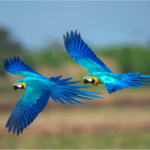Engaging your pets in DIY Dog Agility Sports at home not only boosts their physical fitness but also strengthens your bond. This guide offers creative ideas to set up a fun and stimulating environment for your beloved canines, ensuring their well-being and happiness.
Easy Steps for Agility Setup

Starting with basic agility drills can significantly enhance your dog’s agility and obedience. Simple hurdles, made from PVC pipes, offer a great starting point. These lightweight and adjustable obstacles are perfect for training sessions, fostering an active and engaging atmosphere for your pets.
Moreover, weaving poles can be easily constructed using garden stakes. This setup not only sharpens their maneuvering skills but also provides mental stimulation. Regular practice through these poles improves their focus and agility, making the training both enjoyable and beneficial.
Lastly, a homemade tunnel, crafted from durable fabric and wire hoops, adds variety to the agility course. This encourages exploration and play, vital components for a dog’s physical and mental health. Integrating these elements into your backyard creates an enriching and dynamic environment for your dogs.
Boost Fun with Creative Courses
Incorporating a seesaw into your DIY Dog Agility Sports setup introduces an excellent balance challenge, fostering confidence and coordination in your furry friend. Constructing this with a sturdy plank and a balanced fulcrum ensures safety while adding an exciting twist to their routine. Regular practice on the seesaw not only enhances their physical capabilities but also builds trust, as they navigate the balance challenge with your encouragement and guidance.
Another engaging addition is a homemade jump ring, which can be crafted using a hula hoop suspended from a frame. This not only adds a fun leap component to their agility circuit but also aids in improving their precision and jumping skills. The joy and excitement visible in their leaps are unmatched, making this a rewarding experience for both you and your pet. It’s a fantastic way to keep their workouts varied and stimulating.
Lastly, setting up a simple slalom course using soft, flexible poles provides a safe and enjoyable way to enhance their agility and directional commands. Navigating through this course encourages mental agility alongside physical dexterity, making it a comprehensive exercise. The satisfaction of mastering this course together strengthens your bond, making each training session a cherished moment of teamwork and mutual achievement.
DIY Dog Agility Sports Essentials
Integrating a balance beam into your DIY Dog Agility Sports arena can significantly improve your dog’s coordination and confidence. Constructing this feature from a sturdy, non-slip surface ensures their safety while they master the art of balance. This addition not only challenges them physically but also mentally, as they learn to navigate the beam with precision and care, making each successful traverse a testament to their improving skills.
In addition to physical obstacles, incorporating sensory elements like textured paths or scent trails can enrich your dog’s agility experience. These elements stimulate their senses, making the course more engaging and enjoyable. For instance, a path with varied textures—such as sand, grass, and gravel—challenges their tactile senses, enhancing their adaptability and awareness of different terrains.
Finally, incorporating reward-based incentives at various stages of the agility course can significantly boost your dog’s motivation and enjoyment. Whether it’s their favorite treat or toy, these rewards encourage them to complete the course and engage enthusiastically in the training. This positive reinforcement not only makes the agility sports more enjoyable for them but also reinforces their learning and obedience, fostering a stronger bond between you and your pet.
Enhance Training with Interactive Games

Incorporating interactive games into your DIY Dog Agility Sports setup can significantly enhance the training experience for your canine companion. For example, integrating a fetch component at the end of an obstacle course encourages them to complete agility challenges with the added excitement of their favorite game. This not only motivates them to engage more fully in the agility activities but also provides a fun and rewarding conclusion to their training sessions.
Another engaging addition could be a ‘treasure hunt’ game, where treats or toys are hidden in and around the agility obstacles. This encourages your dog to use their sense of smell and problem-solving skills to find the hidden rewards, adding a layer of mental stimulation to the physical exercise. The anticipation of discovering these hidden treasures keeps them excited and attentive, making the agility course an enriching and multifaceted activity.
Lastly, incorporating a ‘follow the leader’ segment into the agility course, where your dog follows you through various obstacles, can strengthen your bond and improve their focus and obedience. This interactive element requires them to pay close attention to your commands and movements, enhancing their responsiveness and trust in your guidance. It’s a wonderful way to combine obedience training with agility sports, resulting in a more cohesive and enjoyable training experience.
Tailor Challenges to Your Dog’s Level
Customizing the difficulty of your DIY Dog Agility Sports course to match your dog’s skill level is crucial for their development and enjoyment. Starting with simpler obstacles and gradually increasing complexity can prevent frustration and ensure a positive learning curve. For beginners, low hurdles and wide tunnels provide a gentle introduction, while for more advanced canines, higher jumps and narrower passageways present a rewarding challenge, keeping them engaged and eager to learn.
Adjustability is key in creating a versatile agility setup. Using materials that allow for easy modification, such as adjustable jump heights and removable weave poles, enables you to tailor the course to your dog’s growing abilities. This flexibility not only accommodates their learning pace but also introduces variety in their routine, preventing boredom and maintaining their interest in the agility activities.
Monitoring your dog’s progress and adjusting the course accordingly is essential for their continuous improvement and satisfaction. Celebrating their achievements with praise and rewards reinforces their success and motivates further participation. As they master each level, introducing new and more complex obstacles keeps the training challenging and fun, ensuring that your dog remains physically fit and mentally sharp.
Safety First in Agility Training
Ensuring safety is paramount when setting up your DIY Dog Agility Sports course. Using materials that are safe and non-toxic, with smooth edges and sturdy construction, can prevent injuries and ensure a secure environment for your pet. It’s important to regularly inspect the equipment for any wear and tear or potential hazards, such as loose parts or sharp edges, to maintain a safe training space.
Appropriate spacing between obstacles is crucial to prevent accidents and allow your dog ample room to navigate the course safely. Overcrowding the agility setup can lead to confusion and potential collisions, which could deter your dog from participating. Designing the course with clear pathways and sufficient space for each activity encourages a positive and injury-free experience.
Lastly, considering your dog’s physical limitations and health status before engaging in agility sports is essential. Consulting with a veterinarian, especially for dogs with pre-existing conditions or older pets, can provide valuable guidance on suitable activities. Tailoring the agility challenges to accommodate your dog’s health ensures they enjoy the benefits of exercise without risking their well-being.
Celebrate Achievements and Progress
Recognizing and celebrating your dog’s achievements in DIY Dog Agility Sports is crucial for maintaining their enthusiasm and motivation. Setting up mini-milestones within the course and celebrating each accomplishment can greatly enhance their sense of achievement. Whether it’s mastering a new obstacle or improving their course time, acknowledging these successes with treats, praise, or extra playtime fosters a positive and rewarding training environment.
Creating a supportive and encouraging atmosphere during agility training is key to building your dog’s confidence and willingness to try new challenges. Dogs are highly sensitive to their owner’s emotions and reactions, so showing excitement and joy at their progress can significantly boost their morale. This positive reinforcement helps to strengthen the bond between you and your pet, making each training session an enjoyable and anticipated event.
Incorporating periodic review sessions to reflect on your dog’s progress and set new goals can keep the agility training dynamic and goal-oriented. This not only provides a sense of direction but also allows for adjustments in the training regimen to better suit your dog’s evolving skills and needs. Celebrating these moments of reflection and planning for future achievements keeps the agility journey exciting and fulfilling for both you and your dog.
DIY Dog Agility Sports: Keep It Fun
The essence of DIY Dog Agility Sports lies in keeping the activities fun and engaging for your furry friend. Introducing variety in the obstacles and changing the course layout periodically can prevent monotony and keep your dog intrigued. This could involve rotating between different types of jumps, tunnels, and weave poles, or even incorporating themed courses based on seasons or holidays to add an element of surprise and excitement.
Incorporating playtime into the agility sessions can also enhance the enjoyment factor. Allowing your dog to freely explore and play with the obstacles without the pressure of performing can help them associate the agility course with fun and pleasure. This approach encourages a more relaxed and positive attitude towards training, making it something they look forward to rather than a task.
Listening to your dog’s cues and adapting the training to their mood and energy levels on any given day is important for maintaining their interest and well-being. Some days they might be full of energy and ready for challenging courses, while on others, a more relaxed and playful approach might be more appropriate. Being attuned to their needs and preferences ensures that agility sports remain a delightful and rewarding experience for your dog.
Engage Your Community in Agility Fun
Sharing the joy of DIY Dog Agility Sports can extend beyond your backyard by engaging your local pet community. Organizing small, informal agility meets with fellow dog owners can foster a sense of camaraderie and provide a platform for socialization. This not only benefits your dog by exposing them to new friends and environments but also allows you to exchange tips and ideas with other enthusiasts, enriching your own training approach.
Participating in community agility events can also offer a broader perspective on the sport, introducing you and your dog to more complex courses and competitive elements in a friendly and supportive setting. These events can serve as motivational milestones, giving you both goals to work towards while enjoying the journey. The experience gained from such interactions can be invaluable, providing insights into advanced training techniques and the opportunity to witness a wider range of agility talents.
Creating an online community or joining existing forums dedicated to DIY Dog Agility Sports can further enhance your experience. Sharing videos of your training sessions, celebrating achievements, and seeking advice from a global community can be incredibly rewarding. This digital engagement allows for a continuous exchange of innovative ideas and moral support, making the agility journey a shared adventure with fellow dog lovers around the world.
Reflect and Plan for Future Agility Goals
Taking time to reflect on your journey in DIY Dog Agility Sports is as important as the training itself. Assessing your dog’s progress, noting the challenges overcome, and the skills acquired provides a comprehensive view of your achievements. This reflection should be a celebratory process, acknowledging the hard work and dedication both you and your dog have invested. It’s an opportunity to appreciate the bond that has strengthened through shared goals and experiences.
Based on this reflection, planning for future agility goals is a natural next step. Setting new challenges and objectives keeps the training dynamic and forward-moving. Whether it’s mastering a more complex obstacle, participating in a community event, or simply improving on current skills, having clear goals motivates continued effort and growth. It’s essential to ensure these goals are realistic and aligned with your dog’s abilities and well-being, fostering a healthy and enjoyable progression in the sport.
Incorporating feedback from your experiences, and possibly from peers and experts in the community, can refine your training approach and enhance future agility sessions. This might involve adjusting the difficulty of the course, introducing new training methods, or even exploring other areas of dog sports and training. The agility journey is not just about the physical courses but also about the ongoing development and enrichment of your dog’s life and your relationship with them.
Embrace the Agility Journey Together
Embarking on the DIY Dog Agility Sports journey with your canine companion offers a unique blend of physical exercise, mental stimulation, and bonding opportunities. Reflecting on the progress made, it’s clear that agility training goes beyond mere physical activity; it’s a pathway to understanding and enhancing your dog’s capabilities and behavior. The journey is filled with moments of triumph, learning, and unconditional companionship, reinforcing the special bond between you and your pet.
As we look ahead, the possibilities for growth and enjoyment in agility sports are boundless. Setting new goals, exploring diverse training methods, and engaging with the agility community can open up new horizons for you and your dog. Remember, the essence of agility training lies in the joy and fulfillment it brings to both of you. It’s not just about the ribbons or accolades but about the shared experiences and the joy of overcoming challenges together.
I encourage you to continue this rewarding journey, embracing each obstacle as an opportunity to learn and grow together. Whether you’re refining skills or tackling new challenges, the agility course is a testament to the strength of your partnership. For more insights and tips on dog agility and training, visit our blog for a wealth of resources designed to support you and your furry friend on this exciting adventure.
I. FAQs about environmental enrichment
- What is environmental enrichment?Environmental enrichment is the process of enhancing an animal's surroundings and lifestyle to improve their physical and psychological health. It involves adding stimuli to their environment that promote natural behaviors and reduce stress.
- What are examples of environmental enrichment for animals?Examples include puzzle feeders, toys, natural habitat elements like plants or branches, and opportunities for social interaction with other animals or humans.
- What are the 5 types of animal enrichment?The five types are sensory (smell, sight, touch, taste, hearing), nutritional (varied diet, foraging), physical (climbing structures, toys), cognitive (puzzles, training), and social (interaction with other animals).
- What are the environmental enrichment methods?Methods include providing varied and species-appropriate stimuli, changing the environment regularly to prevent boredom, and ensuring animals have opportunities for physical exercise and mental stimulation.
- What are the 5 types of enrichment for dogs?For dogs, the five types are sensory enrichment, feeding enrichment, toy enrichment, social enrichment, and environmental enrichment (like agility courses or new walking routes).
- How do you create an enriched environment for a dog?Create an enriched environment by providing a variety of toys, engaging in regular play and exercise, offering puzzle feeders, and introducing new scents and environments for exploration.
- What are a dog's environmental needs?Dogs need physical space for exercise, opportunities for mental stimulation, safe and comfortable resting areas, and regular social interaction with humans and, if suitable, other dogs.
- What are the effects of environmental enrichment on canine behavior?Environmental enrichment can reduce stress, anxiety, and destructive behaviors in dogs, while also improving their overall well-being and strengthening the bond with their owners.
- What is environmental enrichment for cats?For cats, environmental enrichment includes providing climbing structures, scratching posts, hiding spots, toys that stimulate hunting instincts, and safe outdoor access if possible.
- How do you create an enriched environment for a cat?Incorporate vertical spaces like shelves or cat trees, offer a variety of toys, establish regular playtimes, and ensure they have quiet, comfortable places to retreat.

Join Dan Morgan at dwfocus.com, your hub for ‘4 paws and owners’ wisdom! Explore a world where pet care meets expert insights, crafted by Dan, a seasoned vet with a heart for animals. Engage with stories, tips, and advice that every pet owner needs. From playful pups to graceful cats, Dan Morgan guides you through the joys and challenges of pet parenting. Embrace your love for pets with Dan’s expert guidance on dwfocus.com. #4PawsAndOwners #DanMorganPetExpert #dwfocus






